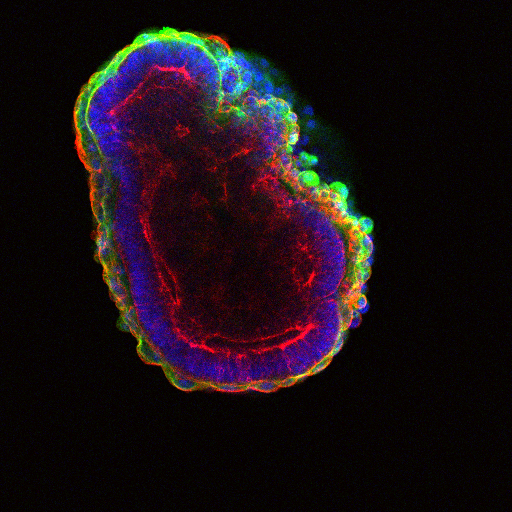
A gene called Prkci can point cells in the right direction, according to a new study in Developmental Biology.
In the study, USC Stem Cell researcher In Kyoung Mah from the laboratory of Francesca Mariani and colleagues demonstrated Prkci’s role in organizing cells into balls and tubes during early embryo and organ formation.
In their experiments, the researchers used mouse stem cells to form what are known as embryoid bodies, or clusters of cells that mimic the early development of embryos and organs in a Petri dish.
In these embryoid bodies, as in embryos and organs, cells organize themselves into layers of tissue, called “epithelia,” that separate the inside from the outside. To do so, each cell has an “apical” side designed to line developing cavities and surfaces, and a “basal” end designed to connect to adjoining cells. Without Prkci, the cells can’t organize themselves in the correct apical to basal direction—which is known as polarity—and cavities in the embryoid body don’t form.
Other processes required for forming embryoid body cavities, such as the rate that cells proliferate or die, continued normally in the absence of Prkci—further underscoring that the gene specifically affects polarity.
However, the researchers found that they could restore normal polarity in the cells lacking Prkci by mixing in an equal number of normal cells with functional Prkci. This suggests that the cells with Prkci sent some unknown molecular signal to the cells lacking Prkci, telling them which way to turn.
“Our findings may impact those studying embryonic and organ development, organization and maintenance,” said senior author Mariani, principal investigator at the Eli and Edythe Broad Center for Regenerative Medicine and Stem Cell Research at USC. “Identification of this polarizing signal could help develop clinical strategies to realign cells when they become disoriented, as often occurs in cancers that affect organ epithelia such as lung, breast and prostate.”
Co-authors include: Rachel Soloff from the University of California, San Diego; Audrey K. Izuhara and Daniel L. Lakeland from USC; and Charles Wang from the City of Hope Comprehensive Cancer Center.
The project was supported by USC, the Robert E. and May R. Wright Foundation, and a California Institute for Regenerative Medicine (CIRM) Bridges to Stem Cell Research Award.
